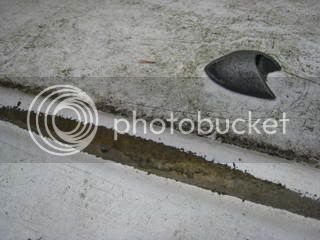ylojelo
Member

This boat ('73) has been in the garage for most of a year and has yet to see water with me. I installed an inspection port a month or so ago. It was damp inside and is drying, and I haven't yet done a leak test. When I turned it on its side, this part of the keel was wet and soft. I can't see through it, but i believe water soaked from the inside out. Once its dry, can I fill this damaged area with West System Epoxy? If I didn't care what it looked like, would I need to paint it? Or better yet, is there a UV stable epoxy, since the paint would get scraped off anyway?
Thanks.
J.


